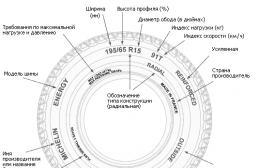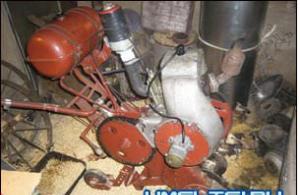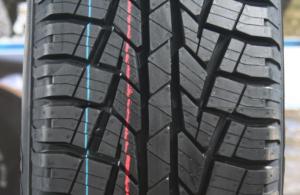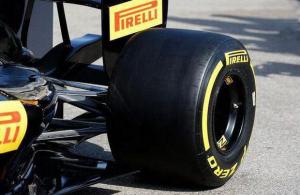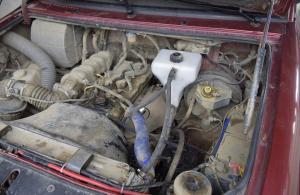Downsizing walks the world and that's it more cars, even budgetary ones, acquire small-capacity supercharged engines. But many car enthusiasts are still afraid of such motors. Or maybe mom is not so scary as the first graders draw her?
Among motorists, the following point of view has become widespread: turbocharging is unreliable, the engine with it is structurally too complicated, it is characterized by increased oil consumption, such engines are cold. In a word, it is better not to mess with them. Is any of this true?
Towards the reliability of turbo engines Volkswagen concern there really were questions. Especially to the first small displacement motors (1.2 and 1.4 liters) of the CBZ or SAX series. There have been cases when the wear of the cylinder-piston group reached critical values already after 100 thousand kilometers. There are two objective reasons... The first relates rather to the operating conditions. Low-volume motors do not like it when the tachometer needle spends a lot of time in the red zone, if the engine itself has not yet warmed up to working temperature... They take longer to warm up, and a large load in an unheated state is fraught with increased wear... Well, the second reason is that the smaller the size of the elements of the crank mechanism (KShM) and the gas distribution mechanism (timing), the faster they wear out.
Turbo engine reliability
Reliability problems were relevant precisely for the first line of Volkswagen engines at the end of the last decade. Over time, the reliability of the supercharged motors has been significantly improved. Of course, there is no need to talk about the huge resource of old atmospheric engines of the 90s at present. But with a resource modern engines of the same power without supercharging, the service life of the same EA211 (1.4) is quite comparable. And the fact that the number of claims under the guarantee has recently dropped significantly confirms this. By the way, the situation is similar with the Ford EcoBoost turbo engine.
Complexity of construction
If we talk about the complexity of the design, then some modern aspirated engines in this part are not inferior to turbocharged engines. Variable intake tracts, direct injection, variable valve timing, heavily lightweight KShM parts - all this is also found on naturally aspirated engines. So the only major design difference is the boost itself.
Long warm-up
As for the problem and, as a result, the cold cabin, it can also be solved. Most reliable way: application of an additional electric heater. In the case of the EA211 engine, engineers used a different technique: the exhaust manifold was integrated into the cylinder head. So the engine warms up a little faster, and most importantly, the amount of heat given off to the passenger compartment has increased.
Why is a turbo engine better than an atmospheric one?
Supercharged engines also have serious advantages over aspirated engines. First of all, this concerns the impact. It is enough to look at the external speed characteristic such motors. Turbocharged engine maximum power and most importantly, the maximum torque available over a wide rpm range. And if the power is still reached at high revs, then the torque in modern supercharged engines is often available from 1500 rpm. And the shelf of this moment stretches right up to high revs. It is almost impossible to achieve this performance in naturally aspirated engines. They have a shelf of moment and power noticeably at the same. In addition, the maximum torque value of a naturally-aspirated engine is always less than that of a turbocharged engine of the same power. The parameters of the KShM and the timing also make their contribution. The lower mass of rotating parts of a turbo engine, by definition, allows faster reaching the operating speed and reduces mechanical losses. Hence the better performance and lower fuel consumption.So the days when a supercharged engine with a modest displacement should have been feared like plague are over. And claims against him are already more like prejudices. Their reliability has become much higher. And our editorial Volkswagen Golf VII, who traveled more than 80 thousand km and did not bring any problems, already confirms this. Well, there are, in fact, two real shortcomings. The first is increased oil consumption, which is associated with design features such engines. And the second is lower heat output. But this problem also faded into the background thanks to additional electric heaters and such moves as integration exhaust manifold in the cylinder head.
Many manufacturers use turbocharging for their car engine. This node works for enough simple principle: traffic fumes rotate the turbine impeller, and it transfers the resulting torque to the compressor impeller, equipped with wide blades.
The compressor in the intake system of the car acts as a pump - it increases the air pressure, allowing more fuel to be supplied to the cylinders at the same time without the risk of incomplete combustion. Despite the possibility of a significant increase in power and Engine efficiency, turbocharged motors are not very widespread.
To understand why, and also decide whether to buy a car equipped with such a unit, you need to consider the pros and cons of turbocharged engines.
Advantages
It should be said right away that further we will only talk about. Installing turbocharger on diesel engine is almost the only way to effectively dose the amount air-fuel mixture falling into the cylinders. About 90% of modern light diesel engines and 70% of cargo units are equipped with a turbocharger, so it would be incorrect to talk about their pros and cons.

The main positive side any turbocharged engine in comparison with atmospheric is increased power. Moreover, the manufacturer can create several options for the motor with different performance indicators - for this, it is enough just to change maximum pressure boost and readjust the intake system. Serial gasoline engines turbocharged have 10-150% great power than their counterparts equipped with conventional and exhaust.
In addition, the advantages of turbocharged units are manifested in more effective work due to the optimized combustion process of the fuel-air mixture in the cylinders. Thereby specific consumption fuel per one horse power decreases slightly, although the absolute value may grow due to increased power... The optimized combustion process also reduces noise and annoying vibrations compared to atmospheric combustion. In particular, such advantages are relevant for engines with an unbalanced layout, for example, with two, three and five cylinders.
Video how a turbocharged engine works:
More efficient combustion of fuel makes it possible to reduce the volume of toxic substances that are released into the air through exhaust pipe... That is why many manufacturers have started producing very small turbocharged units instead of the usual atmospheric engines. According to experts, the introduction of new emission standards in Europe and the United States increased the number of turbocharged engines produced by 25%.
disadvantages
Installing a turbocharger on a car increases its cost - a set of parts for increasing engine power is estimated at about 1-3 thousand dollars. Of course, some manufacturers can cut prices to stimulate sales of cars with turbocharged engines, but the general pattern is this. It is worth saying about the cost of repairing a turbocharged unit - it increases due to the increased complexity of disassembling the entire motor, as well as due to the need to service a new unit. The average service life of a turbine is 100-150 thousand kilometers, after which it will need major repairs or complete replacement.
The disadvantages are manifested in the need for frequent. Service intervals for turbocharged engines have been reduced by about 30–40%, which is associated with high loads on all components of the power unit. Untimely replacement oil will lead to a complete loss of its properties due to oxidation. The lubricating fluid is subjected to strong heating in the turbocharging system, which leads to a complete change in its parameters.

It is necessary to change the oil in turbocharged engines on time
Driving a car with a turbocharged engine is not so convenient - everyone has probably heard about such a thing as "turbo lag". It represents a certain speed range in which the pressure exhaust gases not enough to spin the turbine impeller up to operating speed. Since the engine is designed to operate with increased pressure in the intake system, its dynamics will be severely impaired until the driver revs up. Of course on modern cars turbocharging systems are installed with variable geometry impellers, with a low-inertia turbine or even with two boost compressors, differing basic parameters, but the drawback remains relevant, although not so obvious.
Everyone familiar with the physics and strength of materials also knows that with a rapid change temperature regime work metal parts lose their strength and quickly fail. This rule is also true for turbocharged engines. That's why power unit it is worth letting it run at low speeds for about 1–2 minutes in the following cases:
- Before starting a ride;
- After the end of the trip;
- After an active ride or during severe frosts the time can be increased up to 3 minutes.
Sooner or later, every car enthusiast faces a choice: a car with which engine, atmospheric or turbocharged, he should buy. Both those and other power plants have their advantages and disadvantages. Our today's material is about them.
Pros and cons of an atmospheric engine
First of all, let us explain what an engine is, which in everyday life is called atmospheric. This is the engine internal combustion, in which the air supplied through the carburetor or injector participates in the formation of a fuel mixture (1 part of gasoline and 14 - air), which, igniting, creates energy that sets the working parts of the engine in motion. We will not go into all the details of the operation of such engines - this is not the purpose of this material. For a person who chooses a car with an atmospheric engine, but still looks in the direction of a turbocharged unit, it is important to understand what advantages and disadvantages the engine with which his car will be equipped.
Atmospheric engine
The naturally aspirated engine has three undoubted advantages.
Large motor resource. As the practice of operating atmospheric engines shows, it does not matter, their service life can amount to hundreds of thousands of kilometers. Facts are known when some American atmospheric engines "nursed" 300-400, or even 500 thousand kilometers without overhaul... Moreover, there were copies of record-breaking motors that were installed on other cars, since the "native" body was already rotting, and power point worked before overhaul more than a dozen thousand kilometers.
Reliability and ease of use. Such record figures are due to the relative simplicity of the design of atmospheric engines and their "loyal" attitude to the quality of fuel and engine oil... The atmospheric engine is good at digesting even the most lousy gasoline, which is a dime a dozen in our area. Of course, with frequent refueling with such a fuel, the aspirated engine may experience interruptions in its work, but restoring its vital activity will be several times cheaper than that of the same turbocharged unit.

High maintainability. The aforementioned relative simplicity of the atmospheric engine design also presupposes its high maintainability. That is, in the event of a failure of one or another engine unit, its repair will cost less than it would have gone to repair a turbocharged engine.
Aspirated engines also have their drawbacks. These include large mass the unit itself, less power than a turbocharged engine with a similar volume, the inability to maintain high power when driving in mountainous areas with rarefied air. Finally, a naturally aspirated car loses out to a turbocharged one in dynamics.
Pros and cons of a turbocharged engine
The first turbocharged engine was invented back in 1905, and on passenger cars motors of this type began to be used in the middle of the twentieth century. The principle of its operation is that installed on the engine uses exhaust gases to create forced air pressure, which enters the cylinders, where the fuel mixture is formed. Under the influence of pressure, more air is pumped into the cylinders than in an atmospheric engine, which entails an increase in engine power (on average up to 10%).
 Turbine engine
Turbine engine
The advantages of turbocharged engines include high power with the same working volume as the atmospheric engine, higher torque - this affects the dynamics better than that of the "aspirated" engine. In addition, the turbocharged engine is more environmentally friendly (more efficient combustion of fuel in the cylinders), and emits less noise than naturally aspirated engine.
The disadvantages of a turbocharged engine include operational difficulties. Such a power plant is more sensitive to and (for turbocharged engines it is recommended to use special oil). Oil life and oil filter in such an engine, it is reduced, in comparison with that of an atmospheric one, by one and a half - two times due to the fact that the turbine has to work at more high temperatures... The condition of the oil and filter must be carefully monitored and changed at the intervals recommended by the engine manufacturer. You also need to monitor the status air filter: if it gets clogged, it will impair the performance of the compressor.

Another minus turbocharged engine- increased, in comparison with atmospheric,. Due to the fact that a larger volume of air is used in the cylinders to prepare the mixture, a larger volume of fuel is supplied there. It should not be forgotten that the turbine is faster if the engine is switched off immediately when the car stops. Therefore, to extend the life of the turbine, you need to give the motor some time to work on idle to cool the turbine before turning it off.
In a word, both types of engines have their own positive and negative sides... Therefore, before buying a car with an atmospheric or turbocharged engine, you need to carefully weigh the pros and cons and only then make a deliberate choice.
New cars are less and less equipped with naturally aspirated engines, since the turbines allow developing more power with a small volume. Russian drivers, however, are wary of turbo engines. And in vain.
Turbocharged vs. naturally aspirated engines - what's the difference?
The difference is how air enters the engine cylinders.
- Atmospheric motor
The air itself goes where the pressure is lower. In an atmospheric engine, air enters the cylinders under the action of a vacuum created during the intake stroke - the piston descends and draws in air. It couldn't be easier.
- Aspirated motor
In order to force more air into the cylinders, forced boost comes to help the pressure difference. Roughly speaking, a "big fan" is installed at the inlet. Let's talk briefly about the design of such systems below.
Why does the engine need boost?
To increase engine power, you need to burn more fuel in it - the relationship is simple. But in order to burn more fuel, you need to supply a lot of air into the cylinders, almost a cubic meter for every liter of gasoline. The only question is how to get him to do it? There are two main ways:
- Increase the volume. This suggests itself, and for a long time the designers went this way: they increased the number of cylinders, their volume and configuration. This is how the aviation W12 and V16 with a displacement of a hundred liters with a hook and the American seven-liter V8 for cars appeared. ... Now we will not go into details and only state that this path is difficult. At some point big motor becomes too heavy, and further increase is impractical.
- Increase the amount of fuel burned without increasing the engine volume. Indeed, why not force more air into the cylinders so that you can burn a lot of gasoline? This is where supercharging comes to the rescue.

W12 engine Volkswagen development Group was put in different years on Audi A8L, Volkswagen Phaeton, Volkswagen Touareg, Bentley continental Flying Spur and other premium models. Photo: w12cars.com
What are the main types of pressurization?
Basically, two methods are used to increase the inlet pressure above atmospheric.
- Mechanical blower. There is an air pump at the inlet - a compressor that is driven from crankshaft motor. Simple, but the engine has to turn it and spend part of the power on it.

- A turbocharger that uses energy from the exhaust gas. It is a double casing of two metal "snails", in which two impellers rotate on one shaft. One of them spins up the stream of exhaust gases escaping from the exhaust manifold. The second turns, as it is on the same shaft with the first, - it "drives" atmospheric air into the intake manifold.
We will not now go into the advantages and disadvantages of each of the schemes, as well as describe the history of their creation and development - this is a topic for a separate material. Here it is important for us to determine how good the supercharged motors are.

What are the advantages of a supercharged motor?
High maximum power.
As we have already understood, due to pressurization, it is possible to increase the amount of fuel burned, and therefore, to increase the engine power with a constant volume. The power can be increased several times, but the usual figure is 20–100% for serial engines.
Stable torque.
In a conventional naturally aspirated engine, the inlet pressure, and therefore the amount of fuel burned, changes depending on the engine speed. At some rpm, the filling is maximum, and the engine works with full dedication. On others, the filling of the cylinders is worse, and the torque developed by the engine is less.
In a modern turbo engine, the cylinder is filled by the turbine, and the turbine is controlled by the electronics. It becomes possible to always supply as much air as is needed for the most efficient combustion of the mixture, and as much so that the "iron" of the engine can withstand the load. This allows you to create the famous "shelf" of torque. This name comes from the type of the moment graph, which on turbo engines really looks like a flat shelf.
Low fuel consumption.
It would seem a paradox. Supercharging allows more fuel to be injected while still being economical. How? The fact is that the displacement of the turbo engines is smaller and in general they are lighter. With supercharging, the engine pulls perfectly from the very bottom, and at low speeds there is less energy loss for friction and higher efficiency. As a result, when driving slowly, the turbo engine is more economical. And under heavy load, no one counts the fuel consumption, it is not for nothing that there is an expression "go for all the money", especially since few people constantly drive in extreme modes.

On the graph for measuring power and torque Skoda Fabia RS TSI is visiblethat in the range from 2,000 to 4,500 revolutions, the engine develops 250 Newton meters. This is called the "torque shelf".
Why are people afraid of supercharged motors?
It can be said with complete certainty that supercharged engines are at a higher stage of evolution than "aspirated" ones. And yet, at the moment, most of the cars produced and sold are equipped with exactly classic engines, and not only in "backward" Russia, but also in "enlightened" Europe, not to mention the United States. Why is that?
The turbines have a short service life.
On average, the turbine is gasoline engine serves a maximum of 120-150 thousand kilometers, and repairs are expensive. The mechanical drive supercharger is in theory "indestructible", but it is a dying species, and where it is applied, the resource is not taken care of.
The engine operates in more severe conditions.
The temperature and pressure in the cylinders of supercharged engines is much higher, which means that they wear out more. This is offset by the fact that turbo engines are initially built with a higher safety margin for all systems.
However, it is quite fair that the engine is more complex, it has more sensors, more pipelines, the most heating and leaking, and any breakdown in the control system can damage the motor itself or the turbine.
They say that the turbine gives an unstable thrust.
Indeed, on old supercharged engines the turbine did not "respond" immediately - it took time for the exhaust gases to spin the impeller, and what was called "turbolag" was obtained. Now, with the introduction of new technologies (we will talk about them in more detail later), this problem has been solved. "Purists", advocates of atmospheric engines argue that there is still no perfect connection between the movement of the gas pedal and traction, but for ordinary drivers these subtleties will not be obvious.
They say that turbocharged engines sound less "noble" than atmospheric ones.
Indeed, the turbine makes the exhaust sound less bright and "purebred". But this can only be fully attributed to the "big" motors - straight six or V8. Their sound is recognized as a kind of ideal, and the addition of a turbocharger to them changes the sound dramatically.
According to audiophiles, the sound "from the exhaust" becomes indistinct and smeared. The turbine acts as a muffler, smoothing out peaks in the exhaust gas pressure and creating its own harmonics. If we are talking about ordinary in-line "fours", then we cannot say that the exhaust of such an engine initially sounds especially good, with the addition of a turbine to it, it becomes quieter, but the uniqueness is hardly lost.
Exhaust acoustics specialists come to the rescue of fans of good engine sound. Exhaust systems modern machines That with supercharging, that without - the fruit of serious work, and the features of the sound primarily depend on the quality of the system setup and the wishes of the buyer.

Why are some sports car manufacturers still not recognizing supercharging?
Indeed, such "respected" cars as Toyota GT86, Renault Clio RS and Honda civic Type R. There are several main reasons for this:
- High power can be obtained without a turbine, but on condition that the engine will develop it only at very high speeds. For example, 201 hp. on the same Honda Civic type The R is only available at 7,800 rpm, which is a lot for a non-racing motor.
- The pressurization system greatly increases the weight and size of small motors - it cannot be made truly compact. For sports cars, this is important.
- Many people like the "torsional" nature of atmospheric motors, the absence of any possible delays and influence of air temperature, the "purity" of reactions and sound.
- In many racing disciplines, turbocharged engines are prohibited, but there is a tradition of forcing atmospheric engines.
- On "aspirated" engines - more powerful engine braking under the gas release, which is noticeable on small motors and, again, is important for sports cars.
- In Japan and the USA, where naturally aspirated "lighters" are still mostly kept, there are no such strict restrictions on fuel consumption as in Europe. The turbine engine is more expensive, but it can deliver high power at low consumption and at any altitude, even on the tops of the Alps. A motor without a turbine is simpler, less demanding on maintenance, especially when it is very high power not needed, and high consumption fuel and low thrust in the "non-racing" mode can be neglected. And don't underestimate the strength of the national automotive tradition.
However, little by little boost is gaining space under the hood. sports cars... First, Formula-1 abandoned the "aspirated", and in March 2014 it debuted the first in modern history a turbocharged Ferrari model - California T, which received a "snail" after long break since the days of 288 and F40.
Long-awaited theme: naturally aspirated or turbocharged engine. Many motorists are interested in this burning issue. What to choose and what to ride as long as possible.
The question is ambiguous and requires a detailed understanding of the pros and cons of those and other motors.
And so, naturally aspirated or turbocharged engine. If we take their initial difference, then the engine does not differ structurally. The only difference is that the intake system is added increased flow air and, accordingly, the fuel supply changes in the direction of its increase.
You can install a pressurization system on atmospheric, that is, a turbine that increases the incoming air flow into the intake system, we will correct the fuel supply, here you have a turbocharged engine.
Let's take a deeper look at what is atmospheric and turbocharged.
Atmospheric engine
What does atmospheric mean? As mentioned above, a naturally-aspirated engine does not have an air injection system.
Air is sucked in naturally, intake pistons suck in air, creating negative pressure in the intake phase... In this cycle, together with the air, the fuel is sucked in, forming fuel mixture required for a particular mode of operation of the motor.
For good blowdown, this is what they call good filling working mixture and exhaust gases, on modern atmospheric engines, four valves per cylinder are installed. Two for inlet and two for outlet.
In this case, maximum efficiency motor, relative to its cylinder volume and, accordingly, maximum power.
Pros of an atmospheric engine:
- increased resource;
- simplicity of design;
- consumption of low-octane fuel grades;
- less oil consumption;
- greater mileage before oil change;
- warms up the engine faster.
Cons of a naturally aspirated engine:
- less power;
- high fuel consumption;
- less environmentally friendly.
Turbocharged engine
As mentioned above, this is an atmospheric engine with a turbine installed on it. This is roughly how you can imagine a turbocharged engine. But installing a turbine is simply not enough.
The turbine is powered by the movement of exhaust gases, spinning the shaft with the impeller to frantic revolutions... At the other end of the turbine shaft is an impeller, a so-called compressor, which supplies pressurized air to the intake manifold.
The compressor pumps air, it enters the cylinders much more than in the atmospheric engine. Due to this, it becomes possible to create a ready-made combustible mixture several times more in one intake stroke.... In a turbocharged version, of course, when this mixture is burned, more energy is released, the result is sharp rise power.
The crankshaft, camshafts, connecting rods, pistons, valves in a turbocharged engine remain the same as on an atmospheric engine.
In order for a turbocharged engine to run stably and for a long time, many modifications and improvements are required related to the lubrication of the turbine and the cooling of the supplied air.
Turbocharged engines are faster, more powerful, and operate at higher temperatures.

In addition to the turbine, the turbocharged engine is complemented by an additional radiator (), which serves to cool the air entering the intake system.
An intercooler is necessary so that the mixture does not enter the cylinders when it is very hot, in order to save it from detonation and overheating.
Pluses of a turbocharged engine:
- increased power;
- reduced size and weight;
- reduced total fuel consumption.
Cons of a turbocharged engine:
- reduced resource;
- requires quality oil;
- requires high quality fuel;
- increased oil consumption;
- poor heating;
- the need to change the oil more often.
Summing up
And so, a naturally aspirated engine or a turbocharged one. From the factors considered, we draw a conclusion.
For those who do not need extra troubles with frequent replacements and topping up oil, more cheap service... For those who do not need to pump in, accelerate quickly, for those who love the measured principle of driving a car, they will be more satisfied with the atmospheric one.
Although now the non-turbocharged engines are quite lively and can be driven quite well.
Those who do not hesitate to take care of their iron horse, those who respect powerful cars, and does not count with increased costs for car maintenance. For those who love from a place with a slipper to the floor and overload like in an airplane, then definitely, only a turbocharged engine.
Popular statistics say that a turbocharged engine costs about three times more to operate.
So good luck with your choice!



